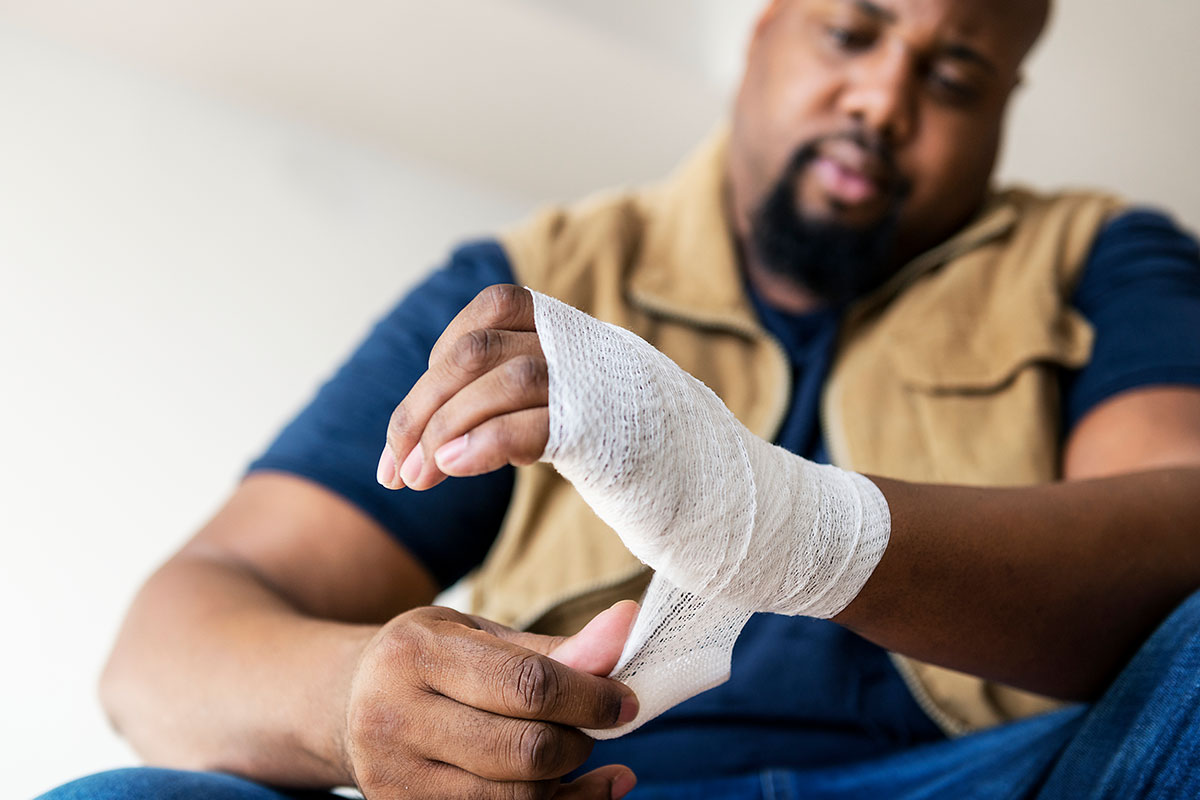Introduction
Wound care is a fundamental element of healthcare that can considerably influence person outcomes. As we change from class finding out to professional practice, the value of sensible applications comes to be apparent. The trip of changing theoretical understanding right into clinical proficiency is extremely important for healthcare specialists, specifically nurses, that often act as the first line of protection in wound management.
In this detailed post, we check out the different measurements of basic wound care training and its sensible applications in professional setups. Our discussion encompasses every little thing from fundamental concepts to specialized techniques, making sure that injury care professionals are equipped with the essential skills and knowledge. We will certainly dig deep right into subjects such as chronic wound care management, complex wound care techniques, and the duty of nursing in effective wound care management.
Understanding Wound Care Specialist Training
What Is Wound Care Professional Training?
Wound care expert training encompasses a location of education that prepares health care experts to successfully manage a variety of wounds. This customized training gears up people with the abilities essential to examine, identify, and implement treatment prepare for clients experiencing severe and chronic wounds.

Why Is Wound Care Training Important?
The relevance of wound care training can not be overemphasized. Appropriately educated specialists can minimize difficulties related to injuries, enhance recovery times, and improve chronic wound care management overall client satisfaction. Furthermore, reliable injury monitoring lowers health care prices associated with long term hospital stays and added treatments.
Key Elements of Wound Treatment Specialist Training
Assessment Techniques
- Learning exactly how to carry out thorough assessments is critical. This includes understanding the anatomy of skin layers and recognizing indicators of infection.
Treatment Modalities
- Different sorts of wounds require specific therapy techniques, including dressings, topical agents, and advanced therapies.
Patient Education
- Teaching patients regarding their wounds improves compliance with treatment regimens and promotes better health outcomes.
Multidisciplinary Approach
- Effective wound monitoring typically entails collaboration among doctor throughout numerous specialties.
Basic Wound Care Training for Nurses

What Does Basic Wound Care Training for Nurses Involve?
Basic wound care training for nurses concentrates on equipping them with important abilities needed to supply initial evaluation and ideal monitoring for individuals' wounds.
Core Subjects Covered in Standard Wound Care Training
- Anatomy & Physiology: Understanding skin structure is vital for acknowledging typical healing processes. Types of Wounds: Distinguishing between intense injuries (like cuts or abrasions) and chronic wounds (such as pressure ulcers) is critical. Infection Control: Techniques to stop infections during clothing adjustments are educated rigorously. Dressing Selection: Selecting ideal dressings based upon wound type affects healing effectiveness.
Wound Care Training Courses Available
Types of Wound Care Training Courses
Numerous programs are readily available for those seeking sophisticated knowledge in injury administration:
Introductory Courses- Designed for beginners that require foundational knowledge.
- Focused on intricate situations needing specialized skills and knowledge.
- Many organizations provide on the internet components that supply flexibility while preserving high academic standards.
Choosing the Right Course
When selecting a program, think about variables such as certification, course web content significance, duration, shipment method (online or in-person), and cost.
Nursing Wound Care Training: A Structure for Success
How Does Nursing Wound Care Training Prepare Professionals?
Nursing wound care training prepares needed for clinicians to take care of various situations they might run into in technique effectively.
Importance of Constant Education
With advancements in medical science continuously progressing ideal techniques in wound management, recurring education and learning makes sure that nurses continue to be skillful in brand-new strategies and technologies.
Practical Applications in Clinical Settings
From Class to Clinic: Practical Applications of Standard Injury Care Training
Transitioning from theoretical structures found out in classrooms to real-world clinical applications calls for attentive method and experience. As an example:
- Initial Person Assessment: Making use of evaluation devices learned throughout training helps nurses precisely determine an individual's demands upon admission. Creating Treatment Plans: Understanding different techniques allows nurses to create customized treatment plans tailored particularly to each client's unique situation. Monitoring Progress: Nurses can apply evaluation methods discovered during their training to check recovery effectively while making adjustments when required.
Chronic Wound Treatment Management
What Constitutes Persistent Wounds?
Chronic injuries are defined as injuries that fail to progress via normal stages of healing due to underlying conditions such as diabetic issues or venous insufficiency.

Challenges in Chronic Wound Management
Managing chronic injuries presents a number of obstacles:
Identifying Underlying Causes Infection Avoidance Strategies Implementing Advanced DressingsSuccessful monitoring needs both skillful nursing techniques in addition to all natural individual considerations-- attending to emotional wellbeing together with physical wellness concerns.
Complex Wound Treatment Strategies
What Are Facility Wounds?
Complex wounds typically involve comorbidities that complicate typical therapy protocols-- examples consist of diabetic person foot ulcers or surgical site infections following extensive surgeries.
Effective Approaches for Taking care of Complicated Cases
Interdisciplinary Collaboration- Working along with medical professionals, dietitians, and physical therapists can improve total client outcomes.
- Techniques like adverse stress treatment or bioengineered skin alternatives might be presented based upon specific needs.
- Regularly taking another look at treatment plans makes sure treatments remain reliable over time.
FAQs About Fundamental Wound Care Training
1. What Are Common Kinds Of Wounds?
Common kinds consist of abrasions, lacerations, slit injuries, medical cuts, stress ulcers (bedsores), diabetic foot abscess, etc.
2. How Long Does It Require To Full Basic Wound Treatment Training?
Most basic courses vary from someday to a number of weeks depending on the institution's curriculum framework however typically aim for thorough coverage within 20-- 40 hours overall instruction time split over several sessions or extensive formats.
3. Can I Acquire Online Certification For Standard Wound Care?
Yes! Countless recognized organizations now provide on-line certification programs tailored specifically towards basic principles surrounding effective management techniques made use of by doctor today!
4. Is Continuing Education Required After Finishing First Training?
Yes! Continuous education plays an important function within lots of healthcare occupations-- it assists ensure practitioners stay updated regarding emerging methods associated directly back towards improving patient outcomes!
5. How Do I Know If My Current Skills Are Sufficient For Taking Care Of Complicated Cases?
Regular self-assessment paired along with comments obtained from peers/mentors provides understandings relating to areas requiring enhancement-- participating in correspondence course occasionally aids keep understanding fresh too!
6. Just How Can I Remain Updated On Developments In The Area Of Wound Management?
Engaging with specialist companies concentrated around advancing methodologies/protocols within this specialized location alongside subscribing journals connected directly back in the direction of pertinent innovations aids professionals greatly!
Conclusion
Navigating the trip from class finding out to clinical method requires dedication and commitment from health care experts associated with basic wound care training programs. By recognizing key elements underpinning successful applications-- whether through examining diverse types/wounds precisely; applying evidence-based strategies tailored particularly toward private person needs; prioritizing continual education possibilities available-- the makeover right into knowledgeable professionals becomes not just possible yet inevitable!
With continuous initiatives aimed at refining capacities further-- health care workers will certainly reinforce their roles supporting optimum recovery paths while boosting general quality-of-life experiences throughout populaces served!